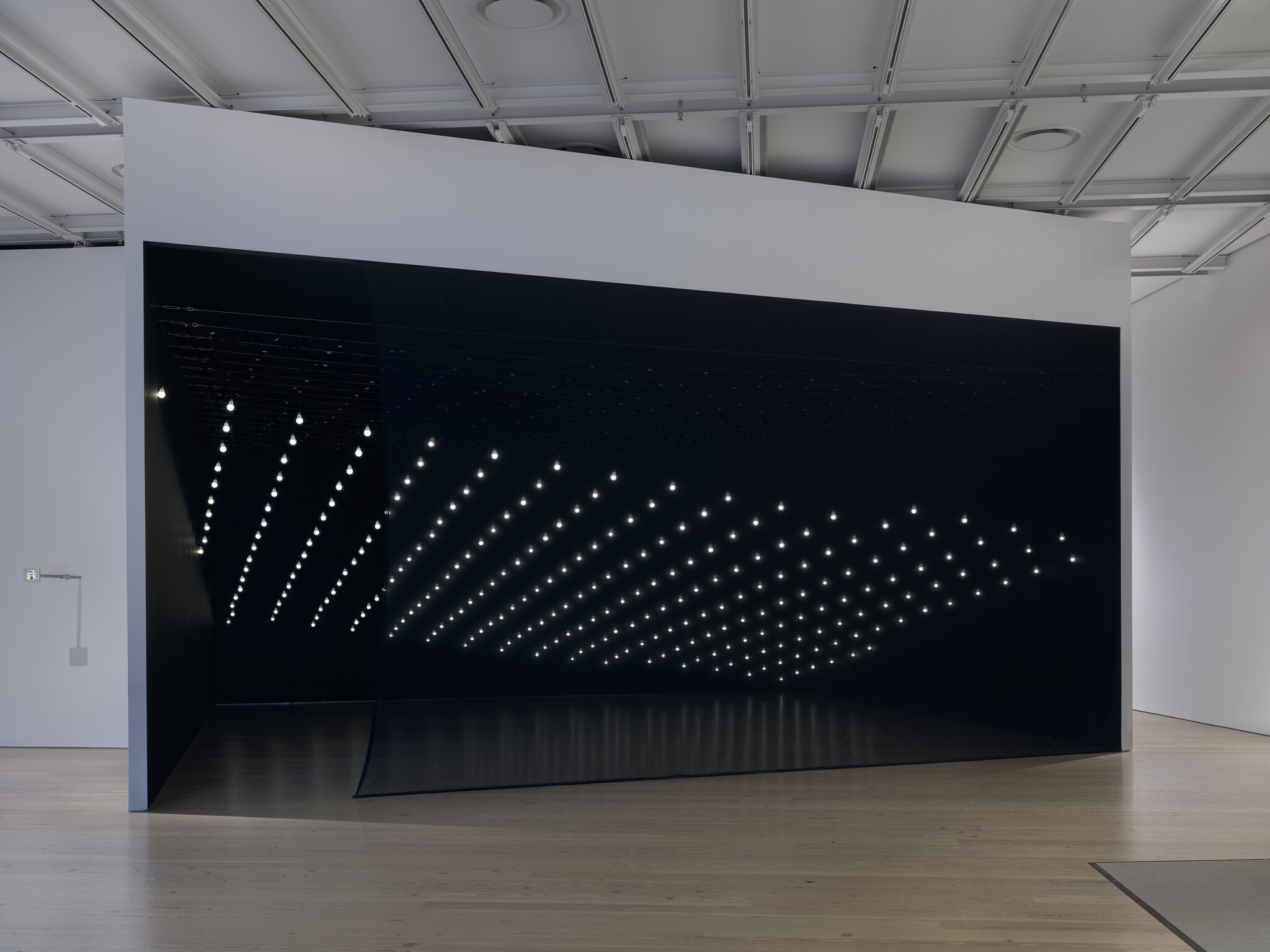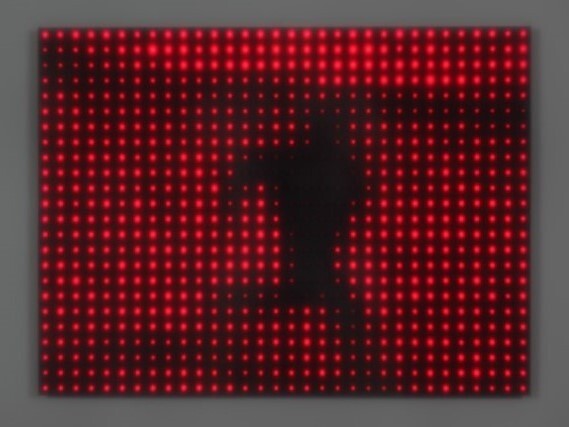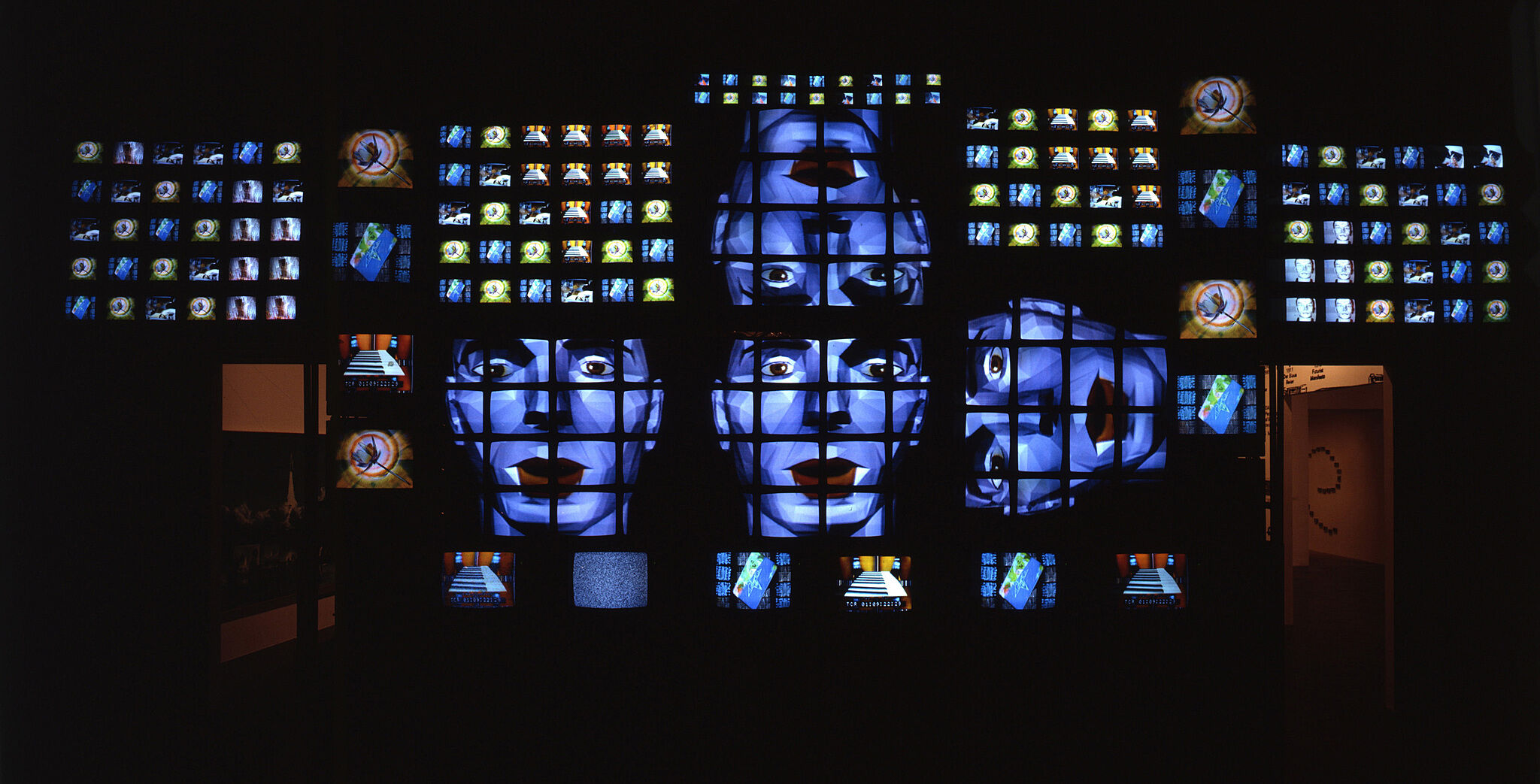Jim Campbell, Ambiguous Icons #5 (Running, Falling), 2000
Sept 28, 2018
0:00
Jim Campbell, Ambiguous Icons #5 (Running, Falling), 2000
0:00
Narrator: In this work, Jim Campbell used LEDs—light emitting diodes—as though they were pixels, to form a low-resolution image.
Jim Campbell: That was the experiment in the beginning: what can be portrayed in low resolution and still have meaning?
Narrator: Jim Campbell.
Jim Campbell: The title of those original works—Ambiguous Icons—is clearly an oxymoron, as icons on a computer screen have no meaning themselves. They're pointers to other things that have meaning. So I chose to use about the same number of pixels that is on a computer screen icon to see if emotional content, poetic content could be portrayed in such low resolution.
Narrator: Campbell pushed the idea further in Reconstruction #7, which is on view nearby.
Jim Campbell: With Reconstruction #7 there's a filter, which is a 2” thick piece of resin that has raw pigment and dye embedded in the resin.
And what the filtering does is that it makes it more recognizable. It kind of, if you will, simulates distance. If you walked a couple of hundred feet away from the Running/Falling work that you have, you wouldn't be able to see the digital structure anymore. And filters in front of these works do the same thing. They either eliminate or partially eliminate the digital structure, making the image more recognizable. One of the things that happens—it took me a while to figure this out—when you're looking at the digital structure, is that it's noise to your brain when you're trying to see the image, because your brain is actually focusing on these blinking red lights.



